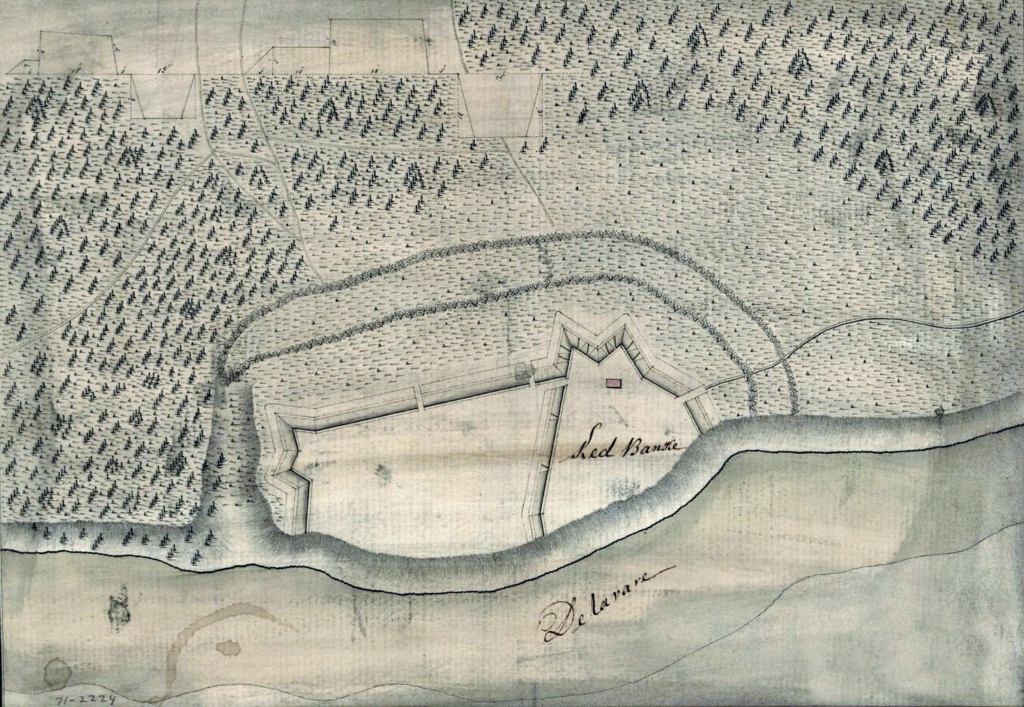
More than 80 people crowded into the Mullica Hill library meeting room on the evening of Sept. 25 to hear the story of the Revolutionary War’s Battle of Red Bank and the recent discovery of bones from 15 slain Hessian soldiers.
“Welcome everybody – what a crowd,” said Beth DeGeorge, the Adult Services librarian, before introducing guest speaker Wade Catts, a consulting archaeologist. Along with Red Bank Battlefield Director Jennifer Janofsky, he organized the public archaeology dig in June 2022 when a femur bone was uncovered.
“It was not our intention to find human remains,” noted Catts, adding that a preliminary scan had indicated there was something in the ground close to one of Fort Mercer’s outer earthen walls that he thought might be remnants of the fort.
“Our goal now is to treat the remains of the unknown war dead with dignity and respect,” Catts explained. “If we could identify just one of those soldiers it would be amazing.”
His hope is that DNA investigation being conducted on the human remains by universities and forensic specialists across the nation could link the soldiers to the descendants in Germany.
“Ultimately we will memorialize this in some way,” Catts asserted.
The co-directors of the Red Bank Battlefield Archaeology Project are Catts, an adjunct professor at Rowan University; and Janofsky, a history professor at Rowan, who both helped create the Rowan Field School at the battlefield to give students hands-on experience.
In the past three years, they’ve learned a lot about how the fort along the Delaware River in what is now National Park was actually built – along with Fort Mifflin on Mud Island – to prevent British ships from bringing supplies to the English Army after it captured Philadelphia in 1777.
Fort Mercer was huge, some 320 yards long by 50 yards wide, with earthen walls along the perimeter. But as Catts said, a French engineer pointed out that it was too big for only 600 troops and recommended they all be stationed in the smaller citadel at the south end of the fort.
On Oct. 22, 1777, about 1,400 Hessian mercenaries marched from their base in Haddonfield and arrived at the fort at about 4 p.m. They were thinking that the Continental Army troops were defending the entire structure, and attacked the northern and eastern ends with two-thirds of their men. Finding nobody there, they moved toward the citadel and were trapped below an 18-foot high wall.
The soldiers in the first and second Rhode Island regiments inside the citadel – 10 to 15% of whom were African Americans or Native Americans – had turned their cannons from the river to face the oncoming Hessians, who were also bombarded by the guns of Philadelphia Navy ships in the Delaware River.
“They didn’t know the big portion of the fort had been abandoned,” Catts pointed out. “It lasted 45 minutes. (Some) 300 to 350 Hessians were killed or wounded.”
Only 11 Americans were killed, Catts said of one of the most decisive battles in the Revolutionary War.
Catts’ lecture was part of the library’s “Where We Live: Gloucester County’s Pivotal Role in America’s Fight for Freedom, 1777-1783,” funded by a REV250 grant from the state library. It runs through May 2026.
“With funds from the REV250 Grant, Mullica Hill library will be featuring a year-long celebration of the 250th anniversary of the American Revolution with programs and lectures by well-known historians, authors, history professors, archaeologists, curators and historical societies,” DeGeorge said.
“There will also be American Revolutionary War-themed book clubs, craft programs and films focusing on the crucial role that Gloucester County’s citizens contributed to the American Revolution.”
The next event in the celebration will be on Thursday, Oct. 23, at 7 p.m. It will feature author Ben Carlton and reenactor Emory Dawes as a British soldier. Carlton will discuss his book, “King of the Tories: John Hatton and the American Revolution in Swedesboro, New Jersey.”
Author Michael Gabriele will talk about his work, “Colonial Taverns of New Jersey,” on Nov. 20, and author JoAnn Laughlin will be the speaker on Dec. 4 to discuss her book, “Stratton Hall, A House with a Name.”
For information, go to www.gcls.org.
